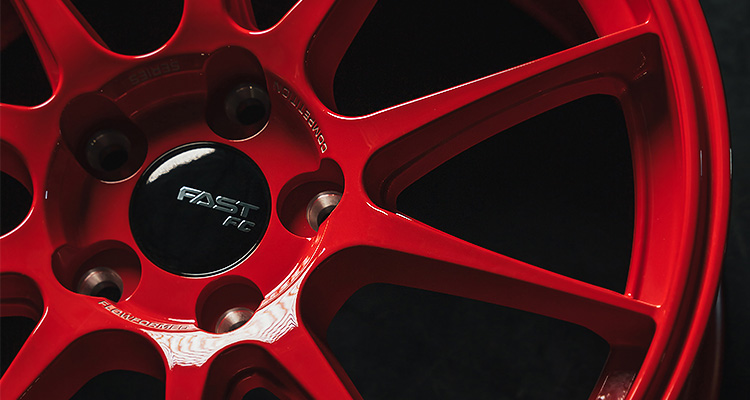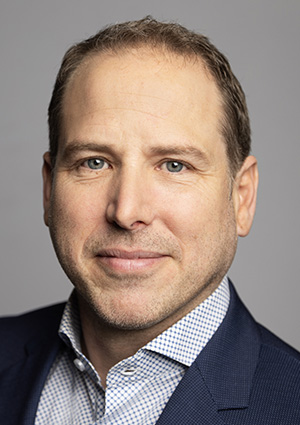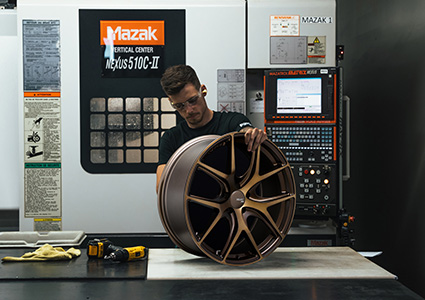
How Fastco’s technology has changed wheel fitment forever
Fastco Canada was founded in 1989 by Glenn Chaplin and acquired by Groupe Touchette in 2023. Based in Vaudreuil, Quebec, the company has grown into one of Canada’s leading manufacturers of alloy and steel wheels. Lee Chaplin, Glenn’s son and current President of the company, shares some highlights of the company’s history: “We started with retail stores because my father loved racing. It is an expensive venture, so he had to generate funds, and building retail shops was his forte. Then he moved into contract manufacturing, and that’s how Fastco was born. Now we serve both the aftermarket and original equipment manufacturer (OEM) segments of the market. We design, engineer, and manufacture wheels that meet the highest standards. Whether it’s for a luxury vehicle, a heavy-duty truck, or an electric car, we ensure our products are built to perform.

“Aside from the typical importation and distribution of certain products, Fastco is unique in Canada because we are a manufacturer. Designing and engineering products in Canada can be slightly more expensive, but it gives us a superior product and excellent speed to market. For a collaboration with an OEM, for example, who would want their logo in the center, they like somebody to design, engineer, manage, certify, sign off, distribute and deliver those products to their dealers. This represents a significant portion of our business. Overall, the operation is mainly split between two sections: the manufacturing for OEMs, and then the manufacturing of our own brands, including Fast Wheels, Fast EV, Fast FC, Fast HD for trucks, and Braelin, which is our luxury brand. We also make replica OEM wheels, and we have another six brands that we make for our OEM partners.
“Designing and engineering homologated products for OEMs can be complex. Sometimes they have manufacturing standard documents that can be hundreds of pages long. These products must meet several requirements, including various safety testing. I once spent two full days in a third-party testing facility in Switzerland, torquing a wheel nut to ensure that the deflection of the wheel seat was better than the OEM. Sometimes these projects require 18 months to two years to build to ensure that the product is of the highest quality possible.”
Future possibilities
Lee’s example perfectly illustrates Fastco’s dedication to excellence – he goes on to outline the company’s approach to automation and the contribution that makes: “It’s absolutely key. Without question, it’s quicker, less expensive, and certainly more accurate. We’ve already implemented some automation at the factory level. Artificial intelligence (AI) is certainly huge, especially with forecasting, planning, and production, which helps us optimize our operations.
“In the coming years, though, I think AI-driven 3D printing will also become a major factor. At the moment, we use a 3D printer for a limited number of plastic applications, including hub rings. Metal printing is in its infancy right now, but as the technology progresses and can produce products that are capable of carrying the correct loads, we could potentially reach a point where people can come into a store with a photo and have four wheels printed in an hour. It’s currently a long way away, but this scenario is a real possibility for the future.”
Transformational software
Lee then shares how the integration of FastFinder, the company’s fitment software, has transformed certain operations: “It’s our pièce de résistance. Twelve years ago, the traditional way of measuring cars for fitment of wheels and tires was essentially based on trial and error. A wheel would get sent to the customer, who would fit it and send it back if it didn’t fit. Occasionally, we would go out with a ruler and protractor to measure particularly difficult cases. Now we have a process using a CMM (Coordinate Measuring Machine) that takes over 200 measurements in 3D which takes significantly less time.
“Over the course of a decade and with millions of dollars of investment, we built a database with the measurements of every vehicle we could get our hands on. Now we have the data for over 79,000 vehicles. We adapted technology from the aerospace industry to 3D scan the fender and wheel well of every vehicle. Within our modeling software, we can then simulate various wheel parameters to see how they fit and adjust if needed.
Now we have the data for over 79,000 vehicles. We adapted technology from the aerospace industry to 3D scan the fender and wheel well of every vehicle. Within our modeling software, we can then simulate various wheel parameters to see how they fit and adjust if needed.
“It also provides us with other benefits we can then pass on to our customers. In the open market, away from OEMs who have very exact fitment requirements, you can have a product that can fit several different vehicles. During the engineering phase, we make sure to adapt the product to maximize fitment for our customers. We also remove the liability for end retailers. For a small ‘mom and pop shop,’ for example, who work extremely hard and may not know all the regulations in depth, we can provide that assurance by guaranteeing the fitment and ensuring the vehicle will comply with all the necessary laws, including around axel load ratings (GAWR vs GVWR) and tire pressure. Adjusted tire pressure is unique to Fastco in North America. The fitment process time has been reduced by around 90 percent and has made it significantly easier for anyone to do. Our new processes and the software we utilize have been key drivers, helping us maintain double-digit growth every year for over 20 years.”
Lee concludes, looking to what lies ahead for the company: “Right now, our job is to maximize the Canadian market. We’ve recently expanded our western warehouse in the province of Alberta, and we are now expanding operations into Toronto. Our first priority is expansion in the Canadian market to make sure we can effectively deliver the proper service level to our customers.
“We also want to be expanding our footprint with OEMs. OEMs are looking for closer supply, especially with the carbon credits. We must bring the manufacturing closer to those OEM distribution points. The closer we can get to those points, the less carbon emissions we are emitting. EV wheel development will also be an area of focus. With a target of 100 percent of our cars being electric in 2035, we must make wheels lighter and more dynamic to make sure we’re supporting the OEMs in reducing the range anxiety people currently experience.
“A longer-term vision of ours would be to bring manufacturing entirely back to Canada. Unfortunately, with the development of emerging markets, everyone left. With carbon emissions being at the forefront of people’s minds and geopolitical factors becoming increasingly concerning, building our own manufacturing plant would certainly be on the list of things to do.”